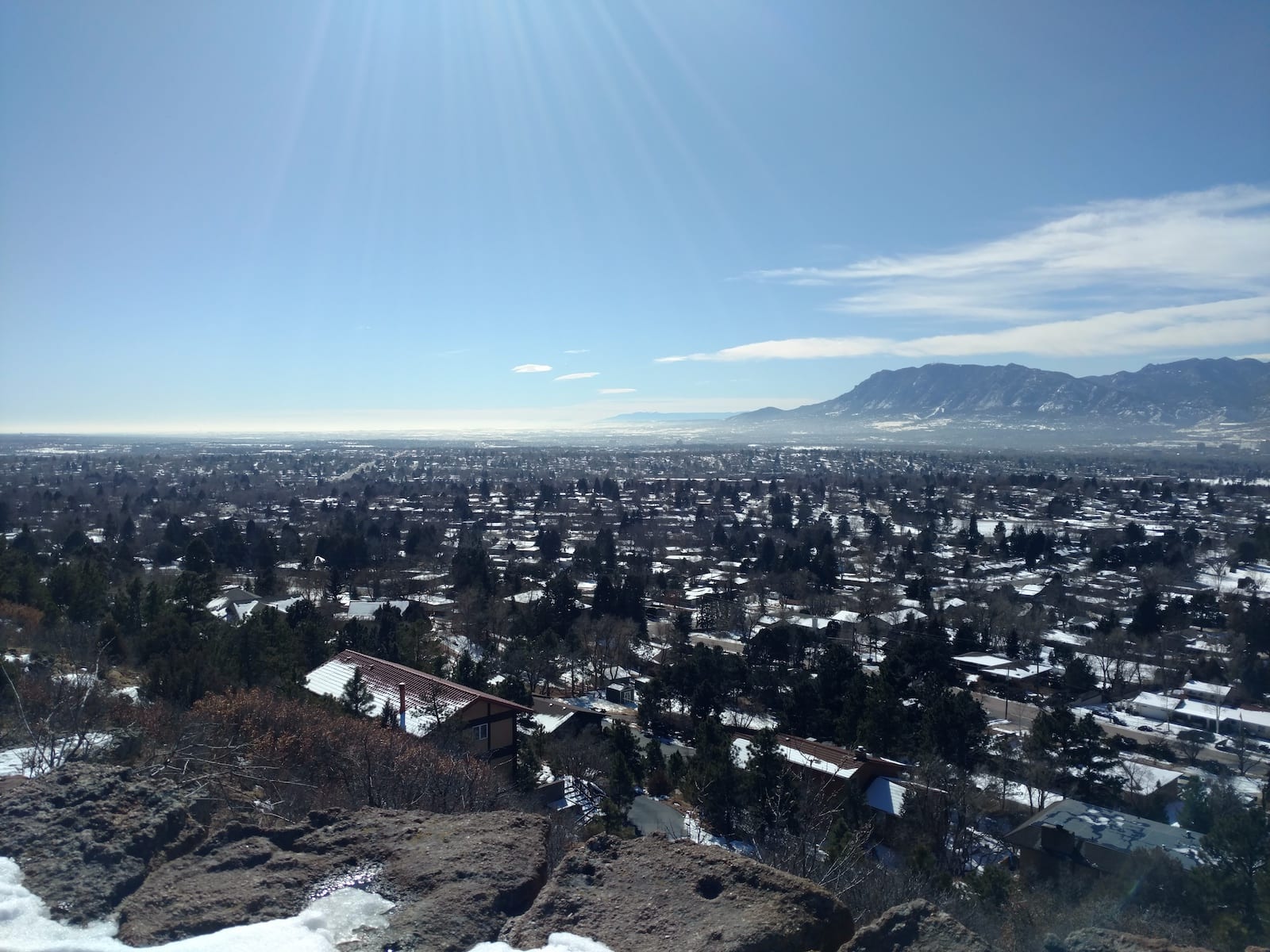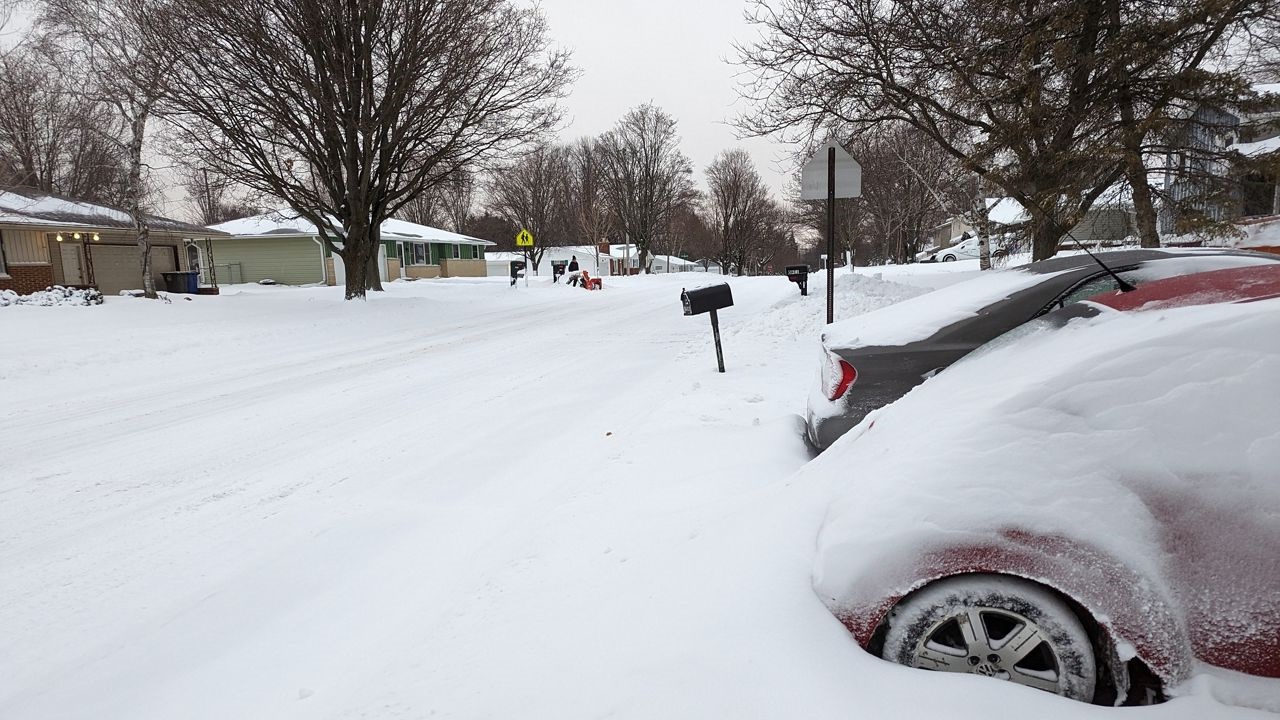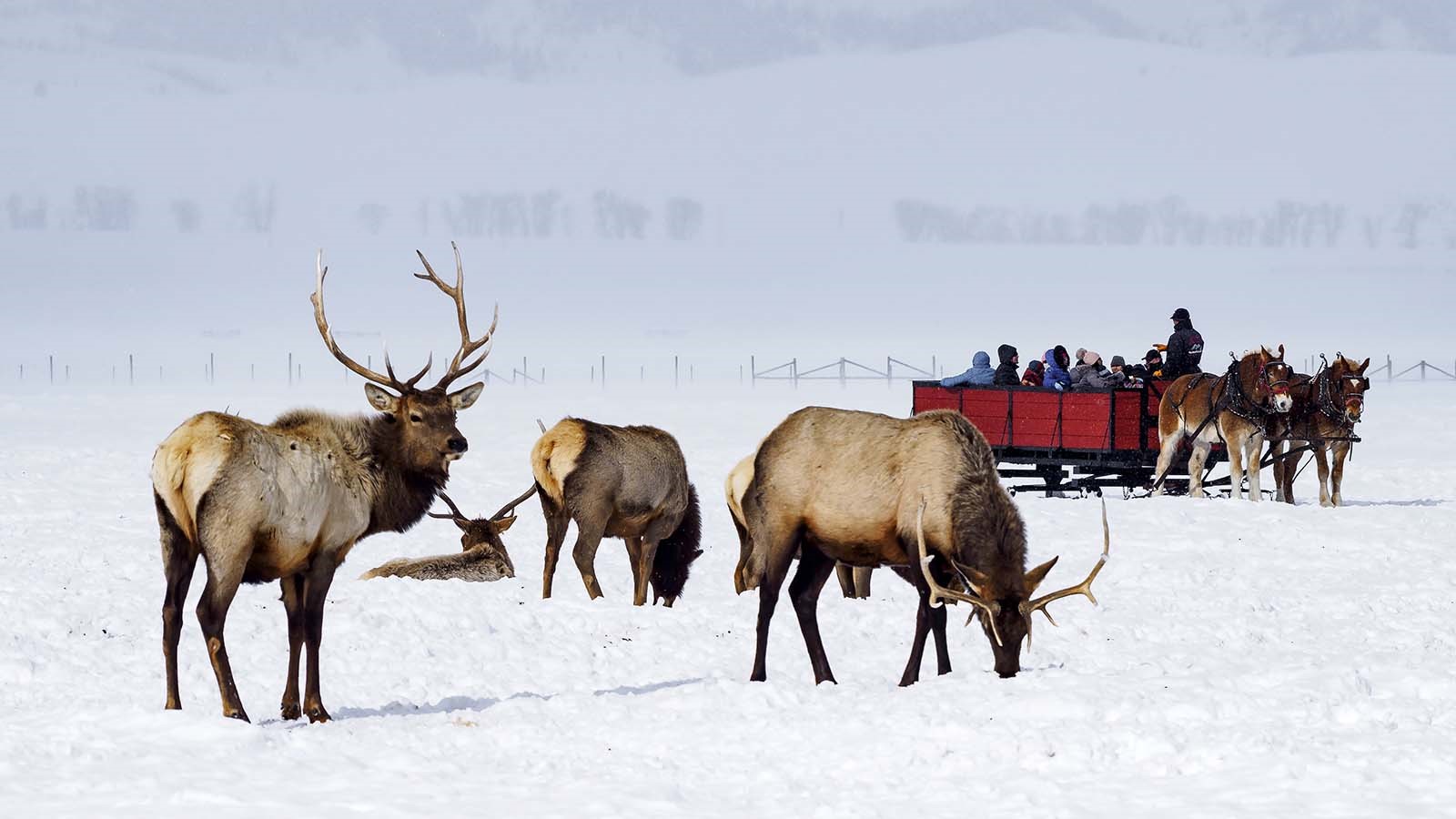Home>Weather and Climate>Average Winter Temperatures In North Carolina


Weather and Climate
Average Winter Temperatures In North Carolina
Modified: April 16, 2024
Discover the average winter temperatures in North Carolina and gain insights into the weather and climate of the region. Plan your visit with confidence.
(Many of the links in this article redirect to a specific reviewed product. Your purchase of these products through affiliate links helps to generate commission for Temperatures.com, at no extra cost. Learn more)
Table of Contents
Introduction
Winter in North Carolina brings a unique blend of chilly temperatures, occasional snowfall, and a distinct change in the landscape. As the vibrant colors of autumn fade away, the state transforms into a winter wonderland, offering a myriad of outdoor activities and breathtaking scenery. Understanding the average winter temperatures in North Carolina is essential for residents, travelers, and businesses alike, as it provides valuable insights into the seasonal climate patterns and their impact on various aspects of life.
The winter season, spanning from December to February, showcases a diverse range of temperatures across the state, influenced by a combination of geographical, meteorological, and environmental factors. From the majestic peaks of the Appalachian Mountains to the picturesque coastal plains, North Carolina's topography plays a pivotal role in shaping the winter climate. Moreover, the state's proximity to the Atlantic Ocean and the Gulf of Mexico introduces additional nuances to its winter weather, creating a dynamic and ever-changing atmospheric tapestry.
In this article, we will delve into the intricate tapestry of winter temperatures in North Carolina, exploring the historical trends, regional variations, and the profound impact of these temperatures on agriculture and wildlife. Additionally, we will uncover the fascinating process of winter temperature forecasting, shedding light on the methods employed to predict the seasonal weather patterns with increasing accuracy.
Join us on this captivating journey through the winter landscapes of North Carolina, as we unravel the mysteries of its average winter temperatures and gain a deeper appreciation for the intricate dance of nature during this enchanting season.
Factors Affecting Winter Temperatures in North Carolina
The winter temperatures in North Carolina are influenced by a multitude of factors, creating a complex and dynamic climate mosaic across the state. Understanding these factors is crucial for comprehending the diverse winter weather patterns experienced in different regions of North Carolina.
-
Geographical Diversity: North Carolina's topography encompasses a wide range of elevations, from the coastal plains to the lofty peaks of the Appalachian Mountains. This geographical diversity significantly impacts winter temperatures. The mountainous western region experiences cooler temperatures due to higher elevations, while the eastern coastal plains generally have milder winter weather.
-
Latitude and Longitude: North Carolina's position on the map plays a pivotal role in shaping its winter climate. The state spans a considerable distance from north to south, resulting in varying day lengths and solar angles. This disparity influences the amount of solar radiation received, directly impacting winter temperatures across different latitudinal bands.
-
Oceanic and Gulf Influences: North Carolina's proximity to the Atlantic Ocean and the Gulf of Mexico introduces maritime influences on its winter temperatures. The oceanic currents and air masses interacting with the coastal areas contribute to moderating winter temperatures, especially in the eastern part of the state.
-
Air Masses and Fronts: The movement of air masses and the interaction of warm and cold fronts play a significant role in shaping winter temperatures in North Carolina. Arctic air masses from the north and maritime tropical air masses from the south converge over the state, leading to fluctuations in temperatures and occasional winter storms.
-
Urban Heat Island Effect: Urban areas, such as Charlotte and Raleigh, exhibit the urban heat island effect, where human activities and infrastructure lead to slightly higher winter temperatures compared to rural areas. This phenomenon influences localized temperature variations within the state.
-
Elevation and Orographic Effects: The elevation of the Appalachian Mountains contributes to orographic effects, leading to enhanced precipitation and cooler temperatures on the windward side of the mountains. This creates distinct microclimates and temperature differentials within relatively short distances.
Understanding these diverse factors provides valuable insights into the intricate tapestry of winter temperatures in North Carolina. The interplay of geographical, meteorological, and environmental elements creates a captivating and ever-evolving winter climate, shaping the experiences of residents and visitors alike.
Historical Winter Temperature Trends
The historical winter temperature trends in North Carolina offer a compelling glimpse into the state's climatic evolution and the patterns that have shaped its winter temperatures over the years. By examining historical temperature data, meteorologists and climate scientists gain valuable insights into the long-term fluctuations and trends that characterize North Carolina's winter climate.
Over the past century, North Carolina has witnessed notable variations in winter temperatures, reflecting the intricate interplay of natural climate cycles, anthropogenic influences, and regional climatic dynamics. The analysis of historical temperature records reveals intriguing patterns, including periods of relative warmth and cold, as well as shifts in the frequency and intensity of winter weather events.
During the early to mid-20th century, North Carolina experienced several winters marked by below-average temperatures, with occasional severe cold snaps and significant snowfall events. These colder periods often coincided with broader climatic phenomena, such as the influence of La Niña events and the variability of the North Atlantic Oscillation, which can exert a profound impact on winter weather patterns in the region.
In contrast, the latter half of the 20th century and the early 21st century witnessed a discernible trend towards milder winter temperatures in North Carolina, accompanied by a reduction in the frequency of extreme cold events and a shift towards more variable and unpredictable winter weather. This shift aligns with broader global climate trends and the influence of anthropogenic factors on regional climates.
Moreover, the analysis of historical winter temperature trends reveals intriguing regional variations within North Carolina. The mountainous western region, characterized by its higher elevations and proximity to cold air sources, has exhibited a more pronounced cooling trend compared to the coastal plains and piedmont areas. This disparity underscores the diverse climatic influences that shape winter temperatures across the state's varied topography.
By scrutinizing these historical temperature trends, climate researchers and policymakers gain crucial insights into the evolving nature of North Carolina's winter climate. This knowledge serves as a foundation for understanding the potential implications of future climate change and variability, enabling proactive measures to mitigate the impacts on various sectors, including agriculture, infrastructure, and public health.
The historical winter temperature trends in North Carolina offer a compelling narrative of the state's climatic journey, unveiling the intricate tapestry of natural variability and human-induced influences that have sculpted its winter temperatures over time. As we navigate the complexities of climate dynamics, the historical perspective serves as a guiding beacon, illuminating the path towards a deeper understanding of North Carolina's winter climate and its implications for the future.
Regional Variations in Winter Temperatures
The diverse topography of North Carolina gives rise to significant regional variations in winter temperatures, creating a tapestry of climatic nuances across the state. From the majestic peaks of the Appalachian Mountains to the tranquil coastal plains, each region exhibits distinct winter weather patterns, influenced by a myriad of geographical, meteorological, and environmental factors.
In the western region of North Carolina, encompassing the Appalachian Mountains and the surrounding areas, winter temperatures tend to be notably cooler compared to the rest of the state. The higher elevations contribute to a pronounced cooling effect, with the mountainous terrain serving as a catalyst for orographic lifting and enhanced precipitation. As a result, the western region often experiences more frequent snowfall and prolonged periods of cold temperatures during the winter months, creating a picturesque winter wonderland that attracts outdoor enthusiasts and nature lovers.
Conversely, the eastern coastal plains of North Carolina exhibit milder winter temperatures, influenced by the moderating effects of the nearby Atlantic Ocean and the Gulf Stream. The maritime influences contribute to relatively warmer winter conditions, with reduced chances of prolonged cold spells and snow accumulation. The coastal areas embrace a more temperate winter climate, characterized by gentle breezes and occasional fluctuations in temperature, creating an inviting environment for outdoor activities and coastal exploration.
The piedmont region, situated between the western mountains and the eastern coastal plains, showcases a blend of climatic characteristics, reflecting the transitional nature of its topography. Winter temperatures in the piedmont region often fall between the cooler mountainous temperatures and the milder coastal temperatures, offering a balanced climate that appeals to a wide range of preferences.
Moreover, within each region, microclimatic variations further contribute to the intricate tapestry of winter temperatures in North Carolina. Localized factors such as proximity to water bodies, urban heat island effects, and elevation differentials create subtle yet discernible differences in winter weather patterns, adding depth to the regional variations experienced by residents and visitors.
Understanding these regional variations is essential for residents, travelers, and businesses, as it provides valuable insights into the diverse winter climates across North Carolina. Whether seeking snowy adventures in the mountains or coastal retreats by the sea, the regional nuances in winter temperatures offer a rich tapestry of experiences, inviting exploration and appreciation of the state's captivating climatic diversity.
Impact of Winter Temperatures on Agriculture and Wildlife
Winter temperatures play a pivotal role in shaping the agricultural landscape and influencing wildlife dynamics in North Carolina. The seasonal variations in temperature exert profound impacts on crop cultivation, livestock management, and the ecological balance of natural habitats, presenting both challenges and opportunities for the agricultural and wildlife sectors.
Agriculture:
The winter temperatures directly influence the agricultural calendar, determining the types of crops that can be cultivated and the timing of planting and harvesting activities. In North Carolina, the winter climate significantly impacts crops such as winter wheat, barley, and cover crops, which are essential for soil conservation and nutrient management. Additionally, the duration and intensity of cold temperatures can affect the overwintering of perennial crops and the survival of early-season plantings, thereby influencing the overall productivity of agricultural operations.
Moreover, winter temperatures play a crucial role in pest management and disease control within agricultural ecosystems. Certain pests and pathogens exhibit distinct responses to cold temperatures, with milder winters potentially leading to increased pest pressure and disease incidence. Conversely, colder winters may contribute to natural pest suppression and the reduction of overwintering populations, impacting the pest dynamics in agricultural settings.
Wildlife:
The impact of winter temperatures on wildlife in North Carolina is multifaceted, influencing the behavior, distribution, and survival strategies of diverse species. Cold temperatures can lead to shifts in wildlife habitats and foraging patterns, as animals adapt to the seasonal changes in food availability and shelter. Additionally, the duration and severity of winter weather can affect the reproductive cycles of wildlife, influencing population dynamics and the overall ecological balance.
For wildlife species such as migratory birds and waterfowl, winter temperatures play a critical role in determining their migratory patterns and the availability of suitable habitats. The state's diverse ecosystems, including wetlands, forests, and coastal areas, are intricately linked to the winter climate, providing essential habitats for a wide array of wildlife species. As such, fluctuations in winter temperatures can have cascading effects on the ecological integrity of these habitats and the species that depend on them for survival.
In summary, the impact of winter temperatures on agriculture and wildlife in North Carolina underscores the interconnectedness of natural systems and human activities. By understanding and adapting to the seasonal variations in temperature, agricultural practices can be optimized, and wildlife conservation efforts can be informed, fostering a harmonious coexistence between human endeavors and the intricate web of nature.
Winter Temperature Forecasting in North Carolina
Winter temperature forecasting in North Carolina is a dynamic and intricate process that draws upon a diverse array of meteorological tools, scientific methodologies, and technological advancements to provide accurate and reliable predictions of seasonal weather patterns. The forecasting of winter temperatures is of paramount importance for residents, businesses, emergency management agencies, and various sectors that rely on weather information to make informed decisions and preparations for the winter season.
Meteorologists and climatologists utilize a combination of observational data, computer models, and historical climate trends to formulate winter temperature forecasts for North Carolina. These forecasts are informed by the analysis of large-scale atmospheric patterns, such as the presence of El Niño or La Niña events, the behavior of the polar jet stream, and the oscillations of oceanic and atmospheric indices. By scrutinizing these climatic indicators, forecasters gain valuable insights into the potential temperature anomalies, precipitation patterns, and the likelihood of extreme weather events during the winter months.
In addition to macroscopic climate signals, advanced computer models play a pivotal role in simulating and projecting winter temperature scenarios for North Carolina. These models assimilate vast amounts of atmospheric, oceanic, and land surface data, enabling forecasters to generate probabilistic forecasts and scenario-based outlooks for the upcoming winter season. The integration of cutting-edge modeling techniques, including ensemble forecasting and statistical downscaling, enhances the accuracy and reliability of winter temperature predictions, empowering stakeholders to proactively prepare for potential weather-related impacts.
Furthermore, the advent of remote sensing technologies, satellite observations, and ground-based monitoring stations contributes to the refinement of winter temperature forecasting in North Carolina. These technological advancements enable the real-time monitoring of atmospheric conditions, the tracking of weather systems, and the detection of subtle climatic signals that influence winter temperatures. By harnessing these technological resources, forecasters can provide timely and localized forecasts, catering to the diverse climatic nuances and regional variations across the state.
As the science of meteorology continues to evolve, the collaborative efforts of research institutions, government agencies, and private sector entities drive innovation in winter temperature forecasting, leading to enhanced predictive capabilities and the dissemination of actionable weather information. The seamless integration of observational data, scientific expertise, and technological innovations underscores the ongoing commitment to delivering reliable and accessible winter temperature forecasts for North Carolina, empowering individuals and communities to navigate the seasonal climate with confidence and preparedness.
The art and science of winter temperature forecasting in North Carolina epitomize the convergence of empirical knowledge, technological ingenuity, and a steadfast dedication to serving the public interest. By unraveling the complexities of atmospheric dynamics and climate interactions, forecasters illuminate the path forward, offering valuable insights into the winter climate and fostering resilience in the face of nature's ever-changing tapestry.
Conclusion
In conclusion, the average winter temperatures in North Carolina reflect a captivating interplay of geographical, meteorological, and environmental factors, shaping a diverse and dynamic seasonal climate across the state. From the cool mountainous landscapes of the west to the milder coastal plains of the east, North Carolina's winter temperatures embody a rich tapestry of regional variations, each contributing to the unique experiences and challenges faced by residents, businesses, and natural ecosystems.
The historical trends in winter temperatures unveil a narrative of climatic evolution, highlighting the influence of natural climate cycles and human-induced factors on North Carolina's winter climate. As the state navigates the complexities of climate variability, the insights gleaned from historical temperature records serve as a compass for understanding the potential implications of future climate change and variability, guiding proactive measures to mitigate impacts on agriculture, wildlife, and public welfare.
Moreover, the regional variations in winter temperatures underscore the diverse climatic nuances that define North Carolina's topography. From the snow-laden peaks of the Appalachian Mountains to the temperate coastal plains, each region offers a distinct winter climate, inviting exploration and appreciation of the state's natural diversity. Understanding these regional variations is essential for fostering resilience and adaptability in the face of seasonal climatic dynamics.
The impact of winter temperatures on agriculture and wildlife underscores the interconnectedness of natural systems and human activities. By recognizing the influence of seasonal temperature variations on crop cultivation, pest dynamics, and wildlife habitats, stakeholders can implement informed strategies to optimize agricultural practices and conserve natural ecosystems, fostering a harmonious coexistence between human endeavors and the intricate web of nature.
The art and science of winter temperature forecasting in North Carolina epitomize the convergence of empirical knowledge, technological ingenuity, and a steadfast dedication to serving the public interest. By unraveling the complexities of atmospheric dynamics and climate interactions, forecasters illuminate the path forward, offering valuable insights into the winter climate and fostering resilience in the face of nature's ever-changing tapestry.
As we embrace the enchanting landscapes and climatic diversity of North Carolina's winter season, the average winter temperatures serve as a testament to the enduring dialogue between nature and human society, inspiring a deeper appreciation for the intricate dance of seasonal climate patterns and the resilience of the human spirit in the face of nature's ever-changing tapestry.














